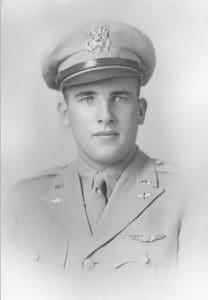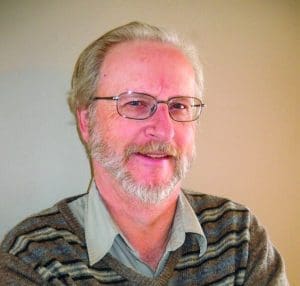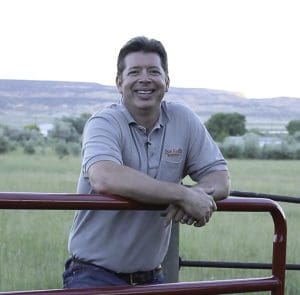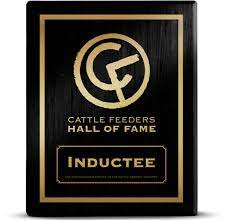
By Walt Barnhart Contributing Editor
Today, fans of Major League Baseball will recognize the name Dick Monfort as the majority owner of the Colorado Rockies baseball team. Many, especially in agriculture, will know his ownership was made possible by the sale of a vast cattle feeding and packing company the Monfort family started in the 1900s. Few, however, know Dick Monfort wasn’t the first significant Dick Monfort in the family.
In fact chances are, if he had gotten the opportunity, the other Dick Monfort would have changed the family’s course through history.
Pride and Joy
Richard Lee “Dick” Monfort was born Feb. 11, 1923, to Warren and Edith Monfort of Greeley, Colo. He was the couple’s first born, and from early on it appeared he would follow in his proud father’s footsteps.
Dick was 7 years old when Warren purchased 18 head of cattle in 1930 and decided he was going to give year-round cattle feeding a try. It was a tough time to be a cattle producer. But Warren found that feeding cattle his way, especially in the idyllic climate of Weld County, Colo., was a lucrative – albeit demanding – way to make a living. The methods Warren used produced a high-quality, consistent product that packers back East valued.
An over-achiever himself when it came to cattle feeding, Dick demonstrated significant prowess in the field. Starting at about the age of 10, his skills in 4-H earned him many ribbons for feeding efficiency of animals. Dick’s feeding journals from the 1930s showed a conscientious attention to detail when it came to feed costs and the amount of feed required to put weight on his animals. Dick won many local, regional and national awards for his talent and efforts. His hard work, dedication and commitment to precision were traits that obviously had been passed from father to son.
All of those traits weren’t necessarily ones appreciated by Dick’s younger brother, Kenny, born in 1928. Kenny joined Dick in the winner’s circle for feeding ribbons in 1932, 1936, 1937, 1938 and 1940, and in fact took top honors with the Grand Champion Hereford Steer in 1941 at the tender age of 12 at the National Western Stock Show. But Dick had taken Reserve Champion and Second Premium Ribbons at the National Western in 1937 for a carload of fed animals; he was the true cattle feeder in the family.
That was fine with Kenny. He had other, more cerebral passions. Cattle feeding was just too much work, he thought. Observers noticed young Kenny didn’t always put 100 percent into his farm work, as he knew it was his brother who would inherit the business.
Kenny did admire his older brother, though, and in fact owed him his life. When they were young they were messing around while cleaning a grain elevator when suction captured Kenny and pulled him toward the grinder. Had it not been for Dick quickly grabbing Kenny and holding on it would have been a disastrous farm accident turned fatal, Kenny believed.
Maturity
Dick graduated from Greeley High School in 1939 and headed off to Colorado A&M (now Colorado State University), where he joined the Sigma Phi Epsilon fraternity. At that time, the Monfort feedlots had some employees but was still basically a one-man operation under Warren, with Dick lending support where he could. By the start of World War II the Monforts had about 3,000 head of cattle, enormous by the day’s standards. They were raising animals that annually produced about 7 million pounds of beef within four years.
After a little more than two years at A&M, Dick decided to join the war effort, enlisting in the Army Air Force in 1942. Here, too, he emulated his father, who had served in the U.S. Army in World War I from 1916 to 1918. Because of poor eyesight, Warren had failed flight training and had instead served as a staff sergeant and mechanic in several states during the war.
On March 27, 1943, while in the Army, Dick married Viola Swanson of Farmers Spur, Colo., a small community that existed at that time between Greeley and Windsor. They honeymooned in Houston, Texas. It was a marriage that wouldn’t see its first anniversary.
Commissioned as a second lieutenant on Aug. 5, 1943, Dick was trained as a heavy bomber navigator on the B-17 “Flying Fortress.” He was stationed in England with the 401st Army Air Force Bomb Group starting in December, 1943.
With a crew of 10, the B-17 was a terrific weapon. It had a 104-foot wingspan, a dozen machine guns and a bomb payload of 10,000 pounds. Dick felt privileged to serve his country on this type of aircraft, the likes of which dropped about a third of the bombs on Germany during World War II.
While durable, the B-17 saw its share of losses during the war. The chances one would survive the 25 missions it was meant to conduct over enemy territory was less than 33 percent.
Dick’s B-17 was among the unlucky ones. It was officially reported missing Feb. 13, 1944, and discovered to have been shot down Jan. 29, 1944, during a bombing mission over Frankfurt, Germany, 13 days before Dick’s 21st birthday. The news would devastate the family and cause every member to reevaluate his or her future. The heir to the family business had been lost.
Kenny served for a year in the Reserve Officers Training Corps (ROTC) while at CSU, but as the sole surviving son of a family with a war casualty, he would not serve in the military. His parents encouraged his scholarly pursuits and, while his college major was animal nutrition, he wouldn’t limit himself to that area of study. Kenny was a bright but average student and wasn’t particularly motivated, rarely demonstrating the kind of work ethic he would become famous for later in life. He would also join Sigma Phi Epsilon, the fraternity to which his brother belonged.
In 1948, Kenny was encouraged by his then fraternity roommate Roy Romer (who would go on to serve as Colorado’s governor from 1987 to 1999) to take a three-month bicycle tour of Europe. While his parents were against the idea, they finally consented as long as Kenny would make a stop at a cemetery near Nancy, France, to pay respects at the grave of Kenny’s brother Dick, who gave his life for his country.
Idle Speculation
What direction might the Monfort legacy have taken had Dick survived and taken over the family business? He had been a dedicated cattle feeder like his father; the packing plant idea had been Kenny’s. If Dick had been in charge and Kenny had gone off to pursue a different career path, would the packing plant have ever been built? Would the Monfort of Colorado public offering been made? Warren was against selling public shares in the company, but Kenny talked him into it. With Dick in charge, the discussion – if it happened at all – might have taken a different direction.
If the public company was never started, would Kenny’s sons Dick and Charlie been able to get involved with the Colorado Rockies? (Would they instead have had some cousins who might be in the picture?)
There’s no doubt today’s Dick Monfort owes much to his late uncle, Richard Lee “Dick” Monfort. We all do. A heartfelt thank you to all who have worn the uniform in service to our country, especially to those who made the ultimate sacrifice.
Retired from a communications career in animal agriculture, Walt Barnhart is author of Kenny’s Shoes: A Walk Through the Storied Life of the Remarkable Kenneth W. Monfort, on which this story is based. He can be reached at carnivorecomm@msn.com.






